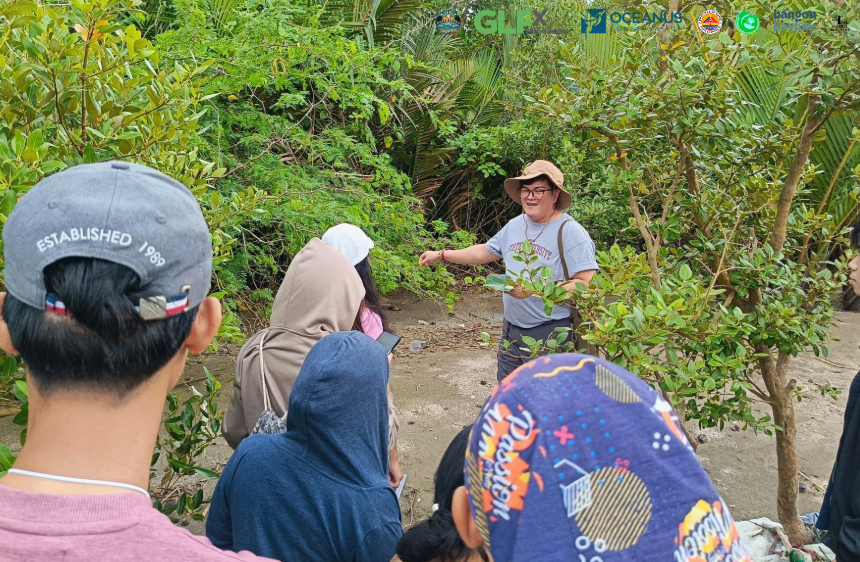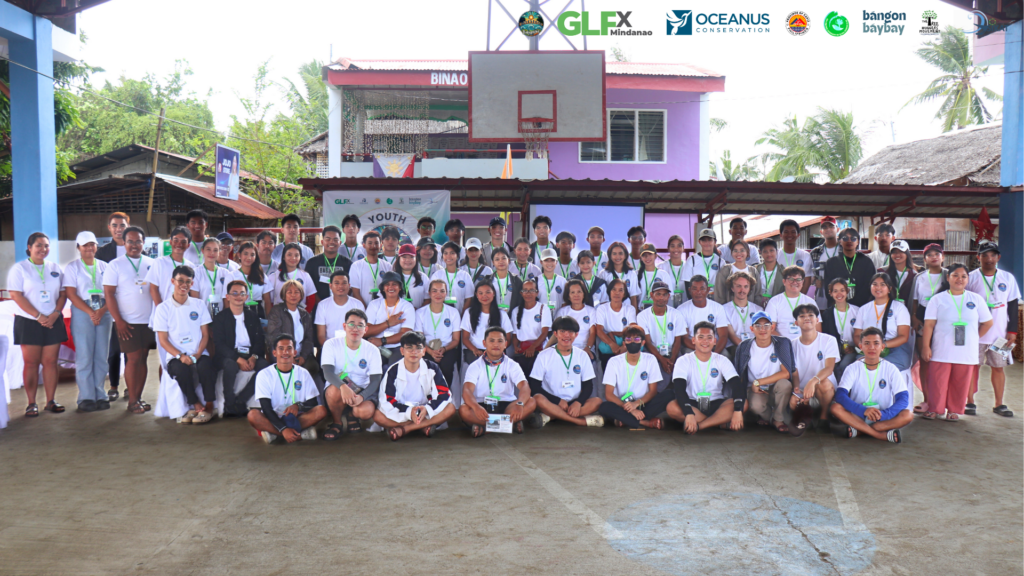
In the face of rising sea levels and environmental degradation, a movement is taking root in Capiz—one driven by the passion and determination of young leaders. Certainly, BayBayanihan sa Capiz: Climate Awareness & Action Workshop isn’t just a workshop; it’s a movement for climate resilience that empowers youth with the knowledge, skills, and hands-on experience to create real change in their communities.
Oceanus Conservation and Global Landscapes Forum (GLFx) have been proud partners in empowering communities and strengthening grassroots conservation efforts. This activity is part of the GLFx Mindanao Chapter Internship Program.
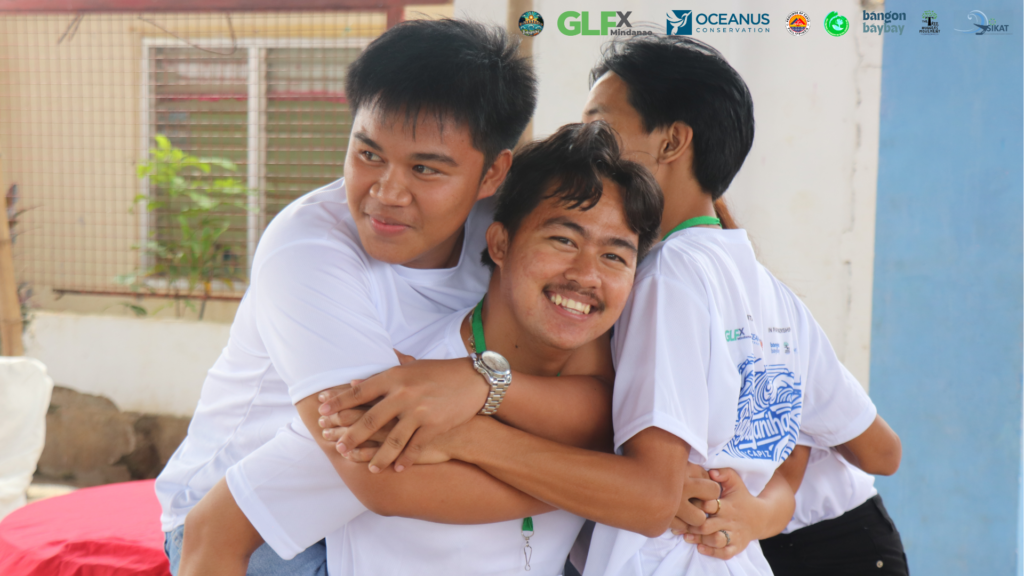
Empowering 44 Capiznon Youth for Conservation and Climate Action
This initiative was set in Binaobawan, Capiz, a coastal village at the frontlines of sea-level rise. It brought together 44 passionate young individuals eager to drive community-led conservation. Participants tackled critical issues such as mangrove conservation, biodiversity monitoring, and climate solutions through immersive learning, direct community engagement, and environmental stewardship.

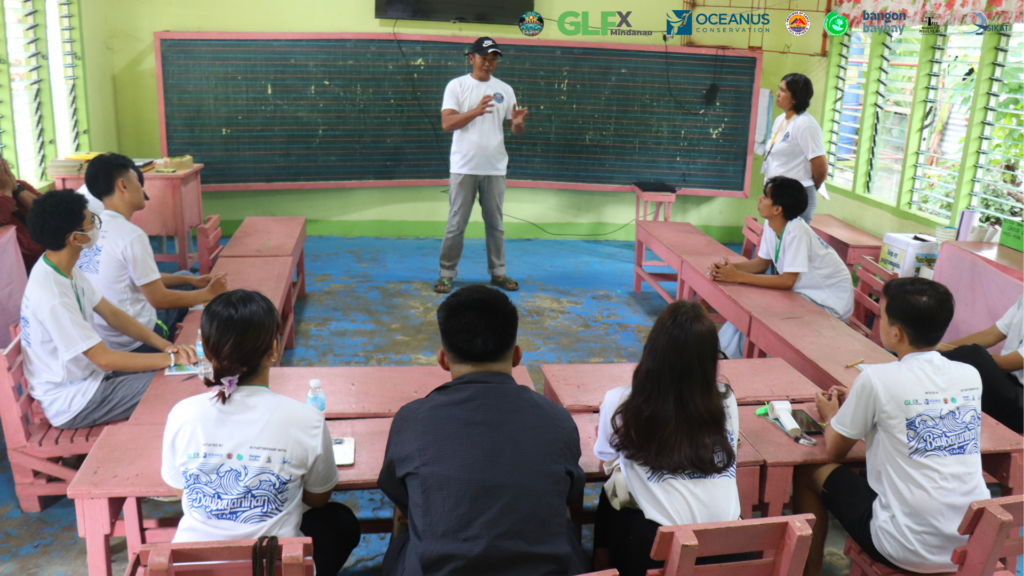
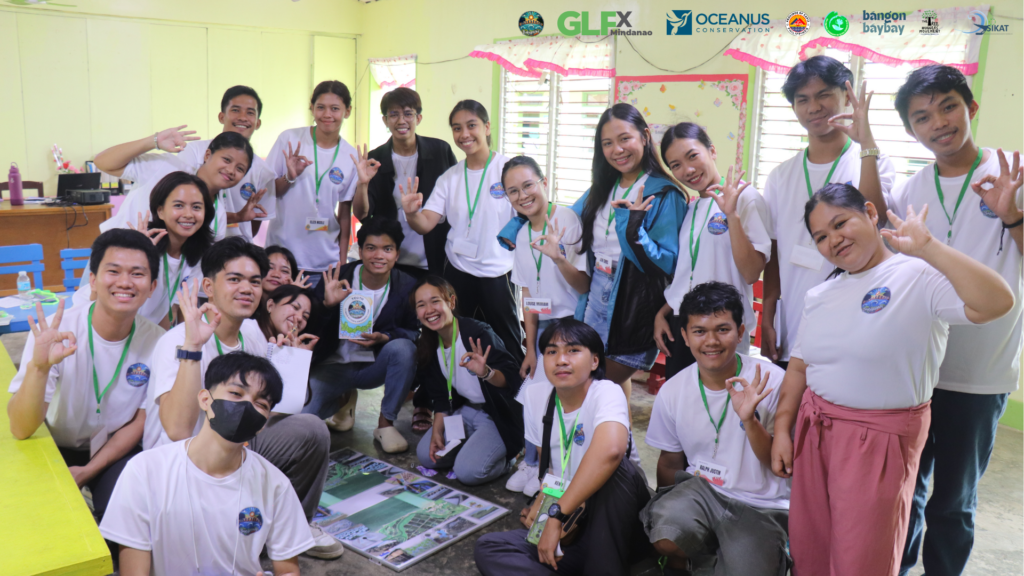

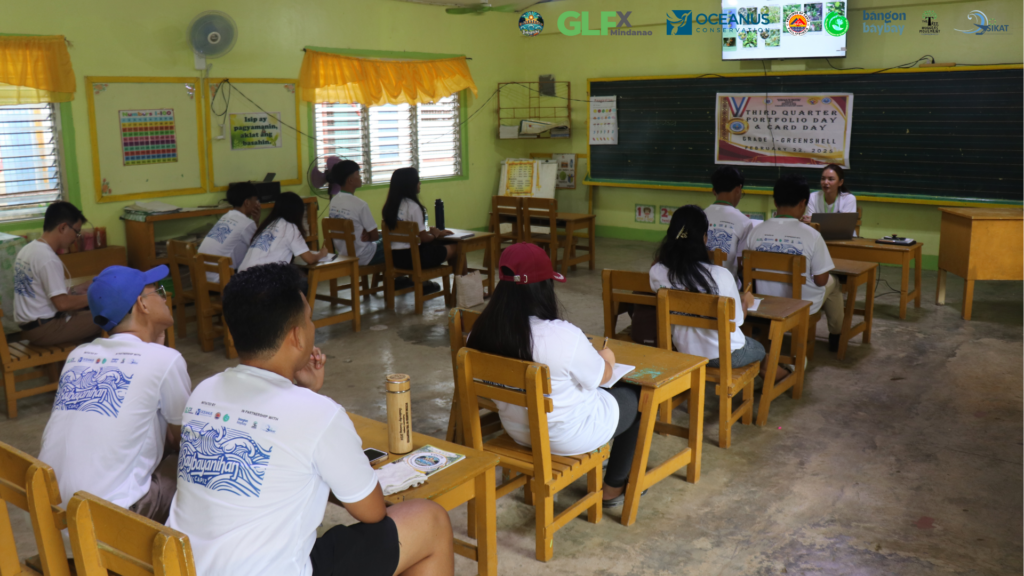
Key Highlights during the Camp:
I. Workshop About Coastal habitats, Citizen science, and Community Initiatives
Before onsite immersions and fieldwork, campers were guided through a series of breakout workshops. These workshops included topics on mangrove conservation, citizen science, community-based initiatives, and nature-based structures. First, these workshops provided the framework to equip campers with the necessary tools to observe and comprehend the narrative found along the Binaobawan shoreline and its community.
- Gilbert Fernando from the Roxas City Disaster Risk Reduction Management Office (CDRRMO) started our workshop sessions. He taught the campers about climate change and its effect on natural disasters.
- Mariz Obsina from Oceanus Conservation was able to share her extensive knowledge of mangrove conservation with students.
- Raia Gallardo from Bangon Baybay shared her experiences empowering the local community to lead nature-based solutions in Binaobawan. In addition, she shared the reality of limited resources for sustainable coastal development through a board game.
- Moreover, Dr. Harold Ortìz Buènvenida from Capiz Ecology and Conservation Center talked about the significance of citizen science. Alongside Finnigan Schwartz, a Peacecorp Volunteer in the CaPENRO, who taught campers how to use iNaturalist.
- Community and LGU speakers, Edwin Caldea from the Binaobawan Fisherfolks Association (BFA), Philip Abagay from the Bangon Agojo Fisherfolk Association (BAFA), and Kgwd. Gloridy Barce of San Ramon specifically talked about the importance of grassroots initiatives and their challenges in sustaining them.
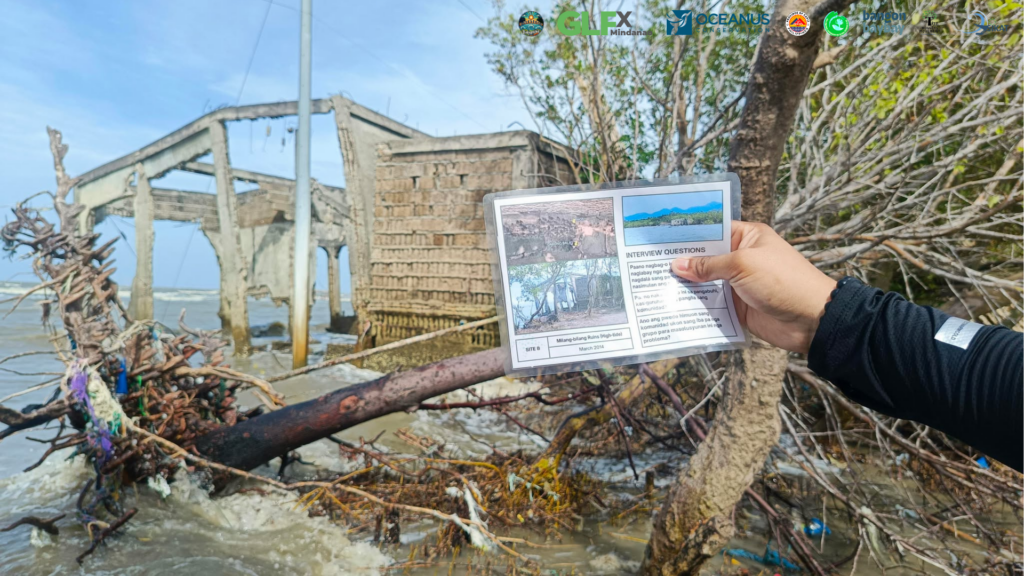
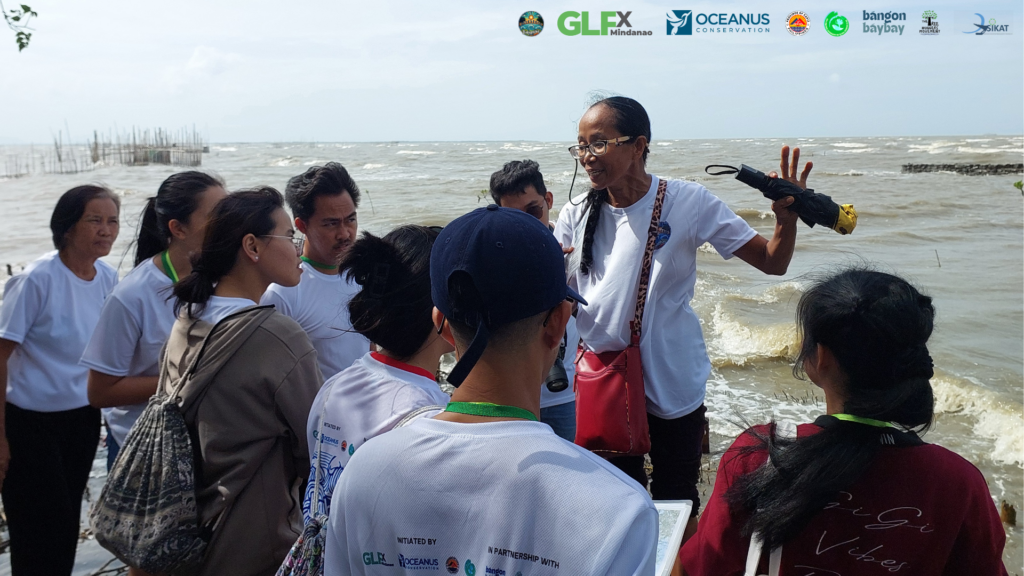
II. Community Storytelling & Grassroots Initiatives
After that, participants engaged with local storytellers. They gained firsthand insights into the realities of climate change, including sea-level rise and community-driven adaptation. Another key point is that by understanding these lived experiences, they built a deeper connection with coastal communities’ environmental struggles. Our storytellers included women from the Binaobawan Fisherfolk Association (BFA) and the SAGWAN at PARO-PARO Self-Help Groups (SHEGs).

III. BioBlitz and iNaturalist tools for Citizen Science
Equipped with digital tools, campers documented 34 species and recorded 109 observations on @iNaturalist, including previously undocumented midzone mangroves. This effort not only strengthens local biodiversity records but also amplifies the role of citizen science in conservation.
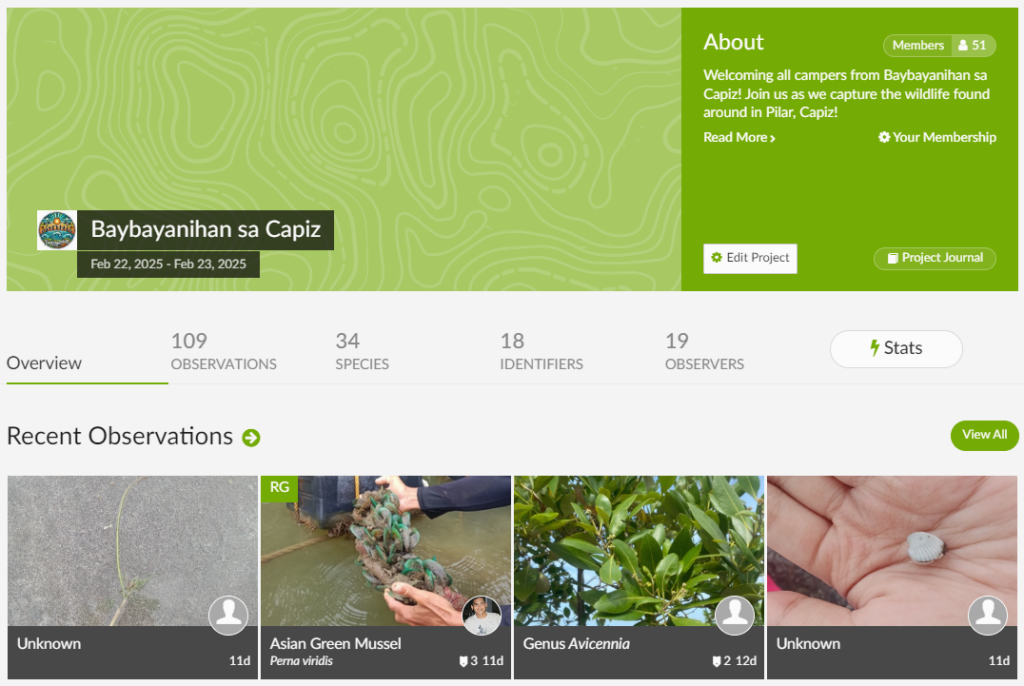
As shown above, you can check out the iNaturalist project online here.
iNaturalist helped connect the campers with other experts and nature enthusiasts online to help identify the wildlife they spotted. Here are some campers who took the lead in our Bio Blitz citizen science activity.
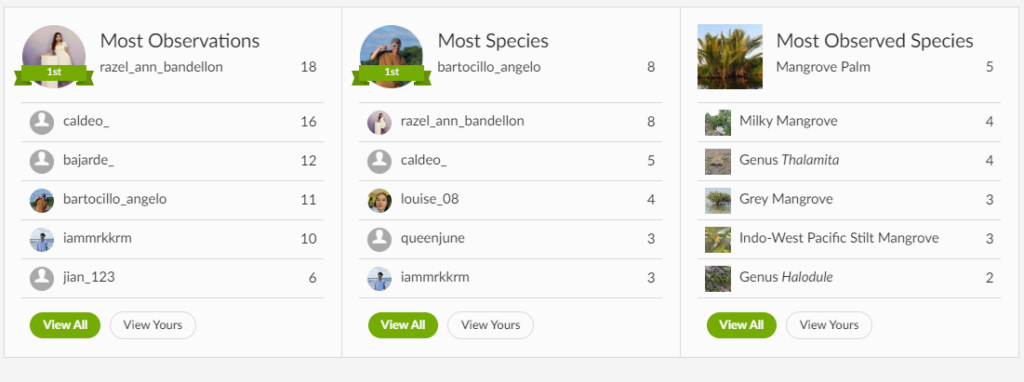
IV. T-Fence Methodology: A Community-Led Coastal Defense in Capiz
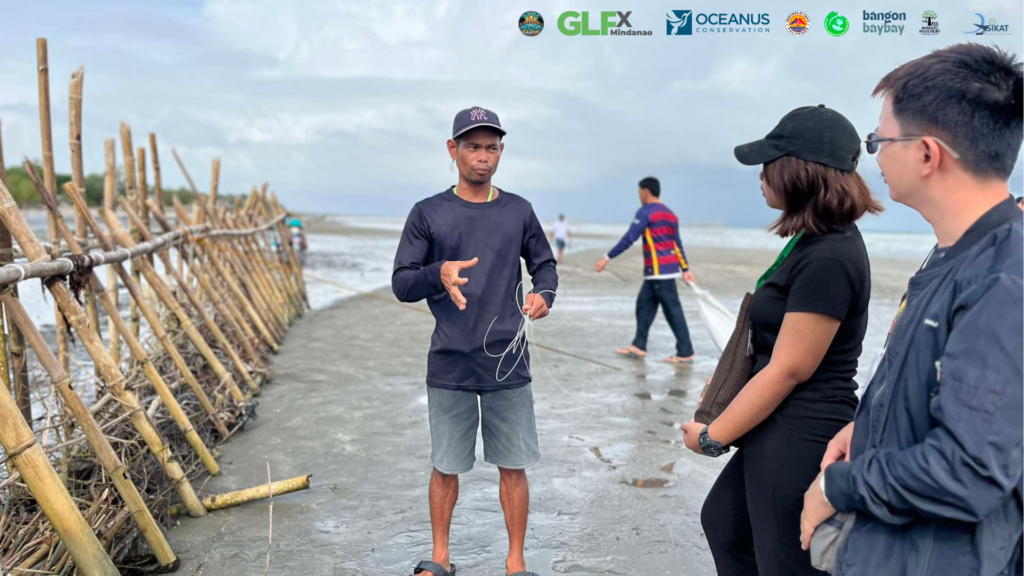
Additionally, youth participants worked alongside community members to collect brushwood to reinforce the T-Fence. This hands-on community and Local Government Unit (LGU) initiative exemplified the power of nature-based solutions for climate action. The brushwood they collected helped community preparations for constructing a second T-Fence in Brgy. Binaobawan, a community-based initiative assisted by Bangon Baybay.
V. Training on Policy advocacy for Sustainable Climate Solutions

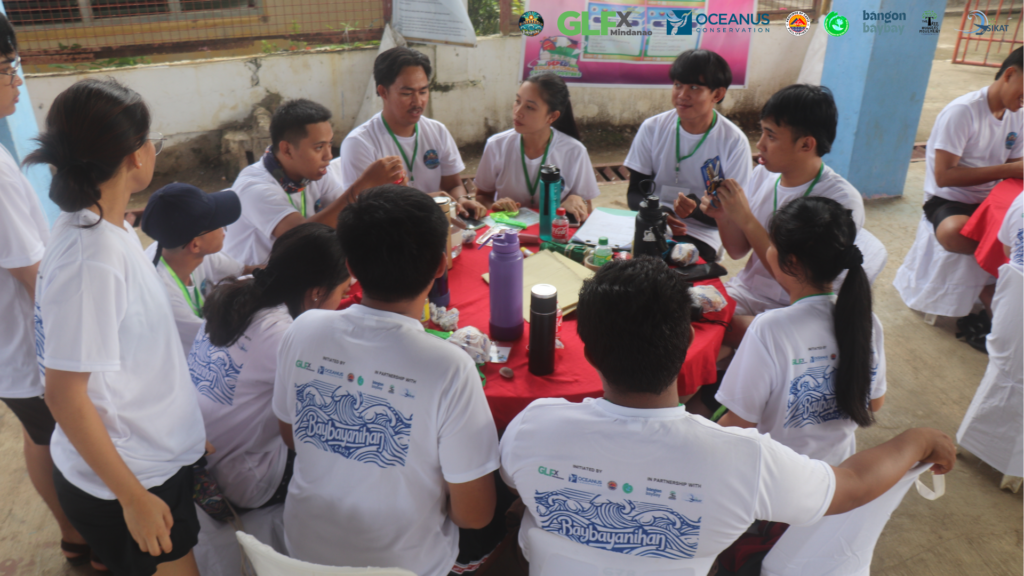
Furthermore, going beyond hands-on activities, participants developed and presented community-driven recommendations to local leaders. It is essential to realize that their proposals are aimed at integrating conservation efforts into local governance, ensuring a lasting impact beyond the camp itself. This is to help young leaders learn how to incorporate what they have learned from the grassroots into policy development.
VI. Photography Contest: Capturing Climate Resilience
At this point, through powerful imagery, participants showcased their experiences—community narratives, mangrove rehabilitation, and climate resilience—as part of Pilar’s Art Month celebration. To have visual stories as compelling testaments to the importance of environmental action. You can view the winning photography submissions here.
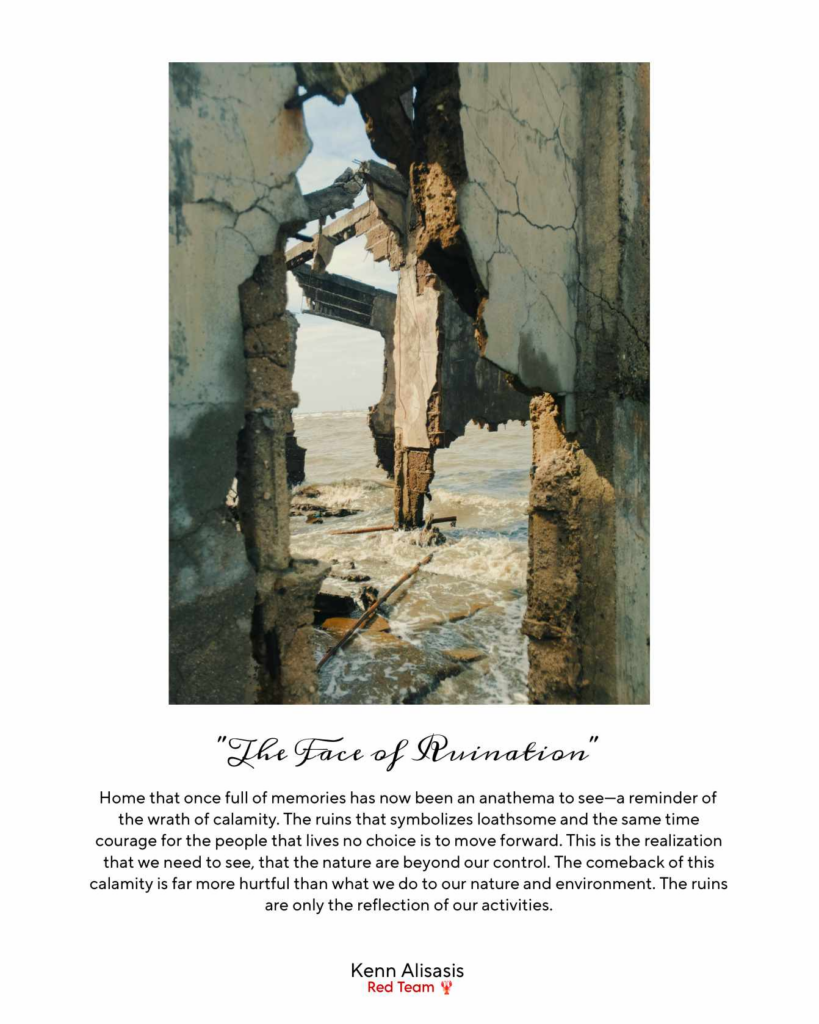
Impact of the Youth-Led Climate Action
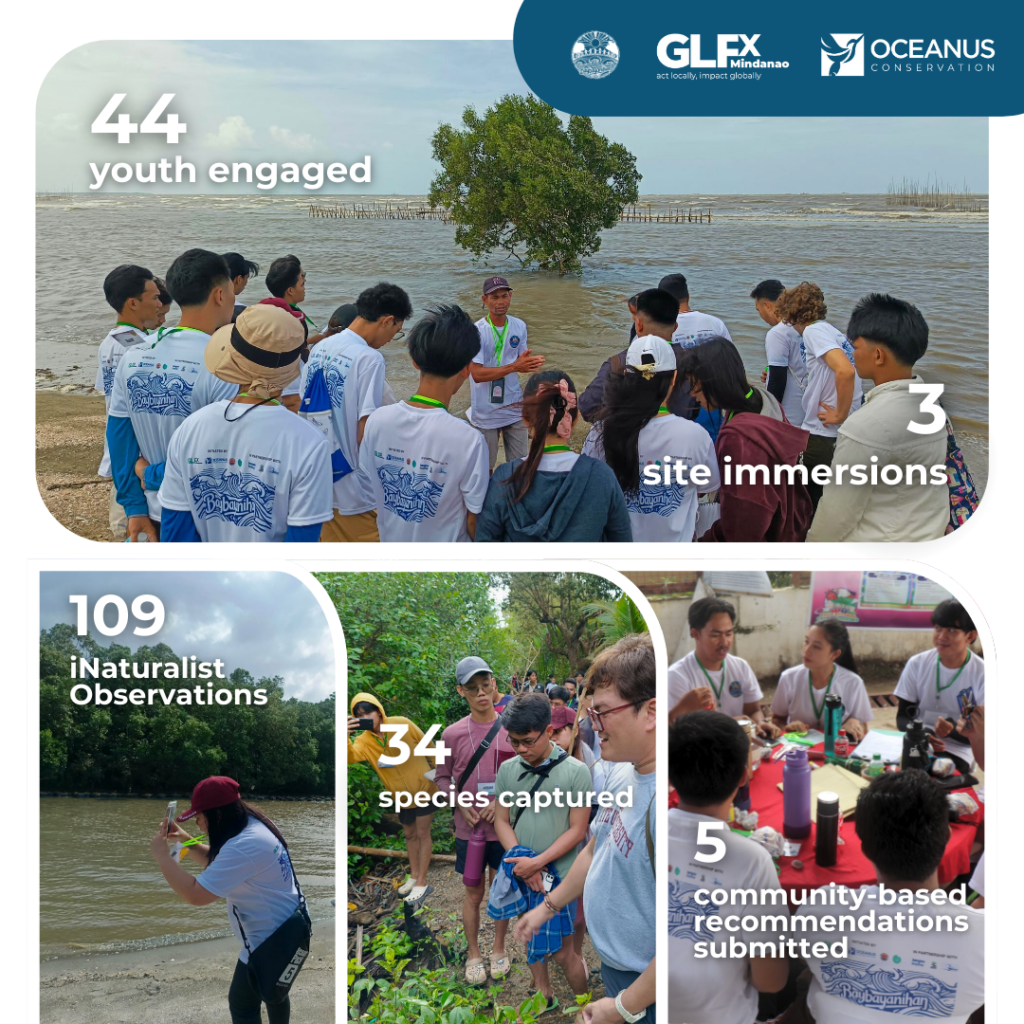
To measure the effectiveness of BaBayanihan sa Capiz, pre- and post-camp surveys assessed participants’ knowledge of key conservation topics. Overall, the results revealed notable improvements in several areas:
🌱 Enhanced awareness of major mangrove threats – Correct responses identifying fishpond expansion as the biggest threat rose from 35.55% to 53.33% of campers.
🌱 Increased understanding of proper mangrove zonations – Over half of the participants (53.33%) correctly answered that mangroves should not be planted in mudflats, seagrass areas, or coral reefs, a 20% increase.
🌱 Greater understanding of proper mangrove planting – 30.77% more campers correctly identified “Bakhaw (Rhizophora sp.) as the incorrect species to plant seaward.
Importantly, these findings highlight both the workshop’s success and areas for future improvement, particularly in reinforcing policy-related climate solutions and ensuring participants feel confident in their knowledge.
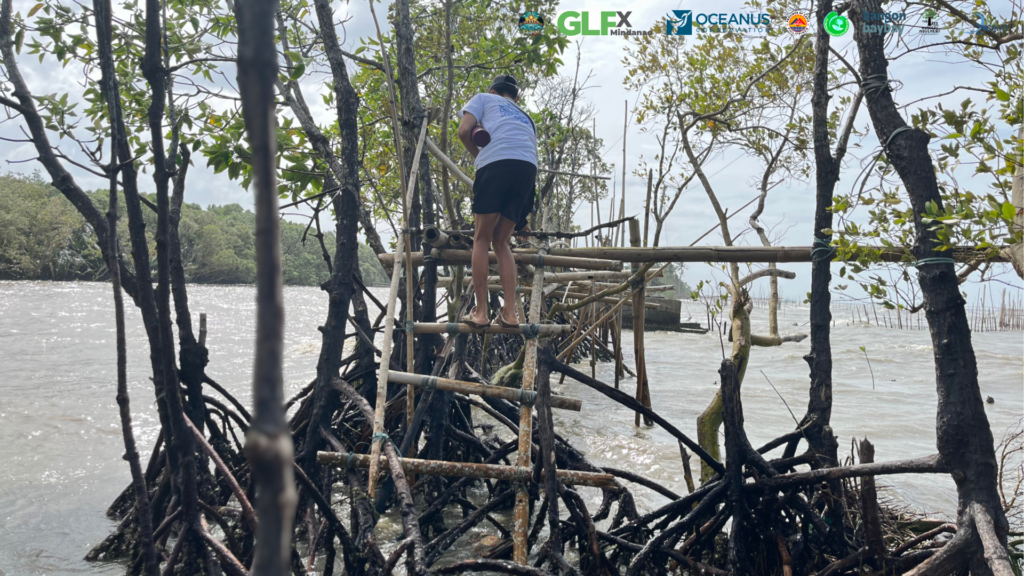
Building a Future of Climate-Resilient Communities
Above all, from documenting biodiversity to strengthening community voices, these young leaders are turning awareness into action. Summing up, BayBayanihan sa Capiz is more than just a two-day camp, hoping it is the beginning of a lifelong commitment to protecting our coastlines, restoring ecosystems, and advocating for sustainable solutions.
This initiative was made possible through the Oceanus Conservation GLFx Mindanao Chapter Internship Program, a proud member of the Global Landscape Forum. The event was co-organized with CaPENRO, Bangon Baybay, Sentro para sa Ikauunlad ng Katutubong Agham at Teknologhiya (SIKAT) Inc. (Capiz), and the Tree Huggers Movement.
A heartfelt thank you to Capiz Eco Youth Volunteers (CEYV) for their dedication as facilitators, and especially to the Binaobawan Fisherfolks Association (BFA) and SAGWAN at PARO-PARO Self-Help Groups (SHEGs) for their beautiful and impactful storytelling.
And a special thanks to LGU Pilar, Barangay Binaobawan, and Binaobawan Elementary School for their invaluable support.
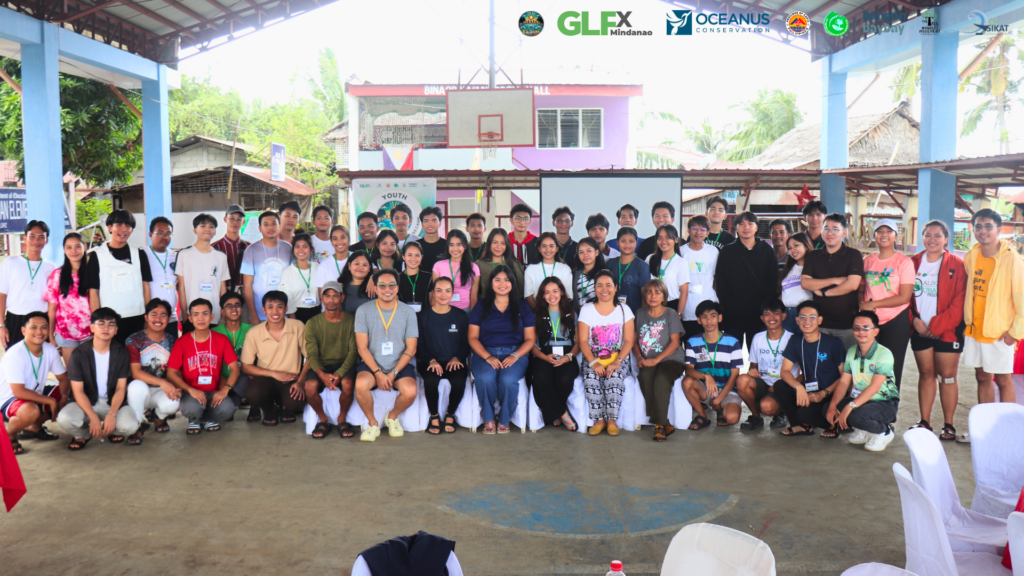
Photo Credits to Capiz Provincial Environment and Natural Resources Office (CaPENRO), Capiz Eco Youth Volunteers (CEYV), and Bangon Baybay.
